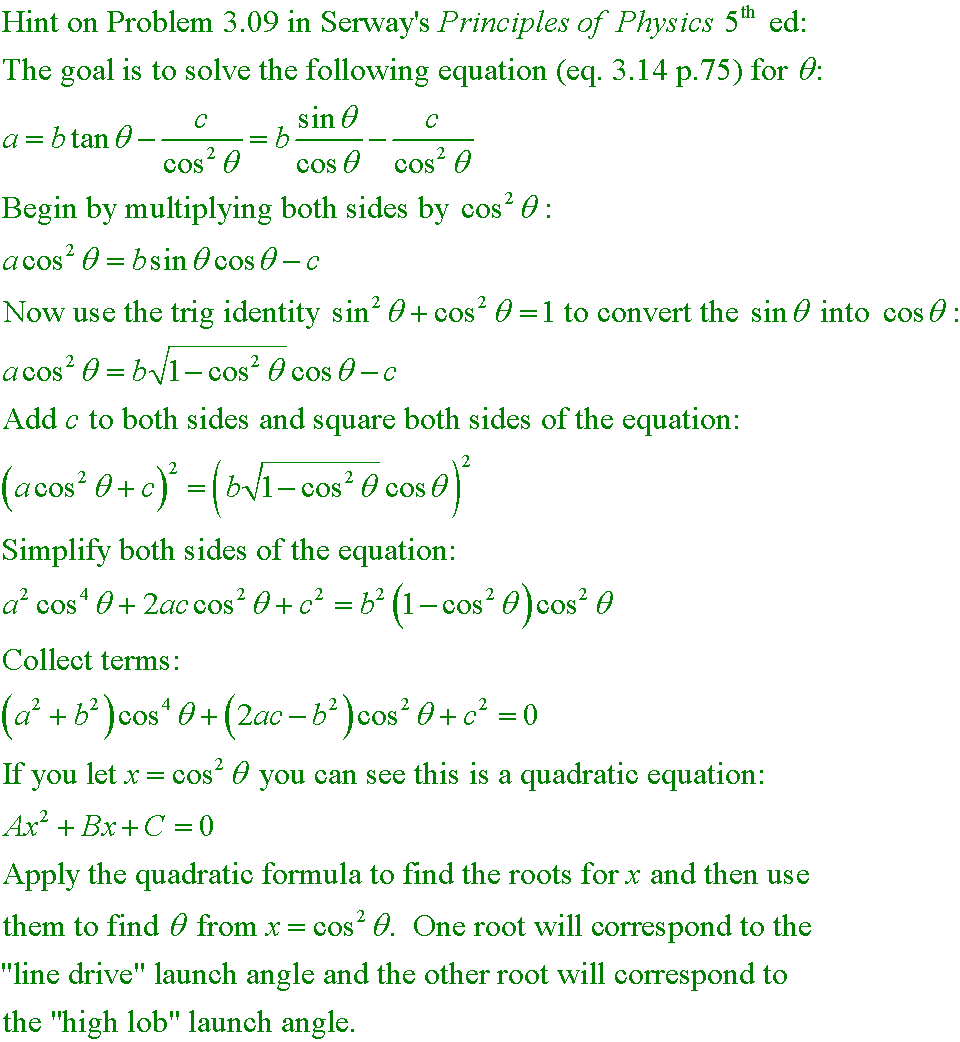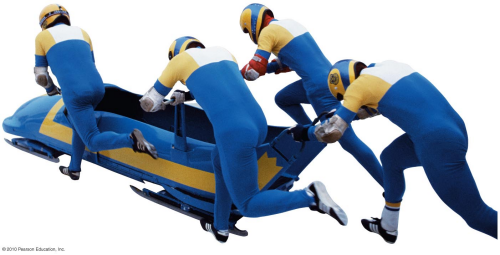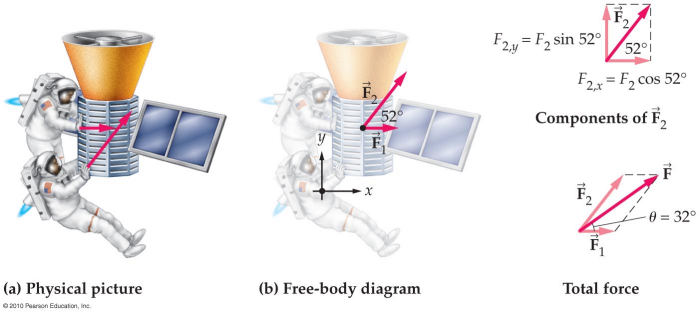PoP5 qq3.3
Rank the indicated launch angles with respect to the total time of flight, from the shortest time
to the longest.
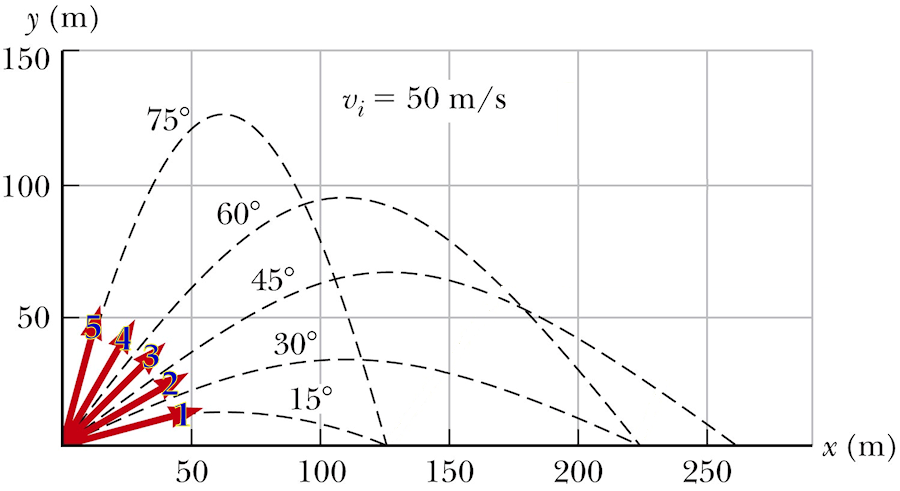
A. t1 < t2 < t3 < t4 < t5
B. (t1 = t5) < (t2 = t4) < t3
C. t3 < (t2 = t4) < (t1 = t5)
D. t5 < t4 < t3 < t2 < t1
Answer
PoP5 4.15
For N2 molecules in air, vavg = 670 m/s and
m = 4.68×10−26 kg. If it takes 300 fs for a molecule to bounce off a wall,
rebounding with the same speed but moving in the opposite direction, what average force does the wall exert on the molecule?
A. 2.09×10−10 N
B. 1.74×10−6 N
C. 9.41×10−3 N
D. 4.78×109 N
Answer
PoP5 4.5a
A 3.00-kg mass undergoes acceleration
a = (2.00i + 5.00j) m/s2.
What is ∑F?
A. (2.00i + 5.00j) N
B. (0.667i + 1.67j) N
C. (6.00i + 15.0j) N
D. zero N
Answer
PoP5 4.14
A 2.80-kg object has two forces on it, its weight and a second force. If it is displaced from rest
to (4.20i − 3.30j) m in 1.20 s, what is the second force? The i direction is
horizontal and j is vertically upward.
A. 4.20i N
B. 7.50j N
C. 16.3i + 14.6j N
D. 9.81i − 7.72j N
Answer
answer
A. t1 < t2 < t3 < t4 < t5
The time of flight of a projectile is determined by its initial vertical
velocity. The higher the initial upward velocity, the longer its time of flight.
answer
A. 2.09×10−10 N

answer
C. (6.00i + 15.0j) N
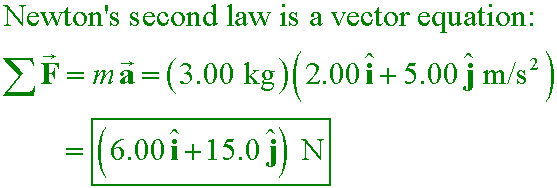
answer
C. 16.3i + 14.6j N
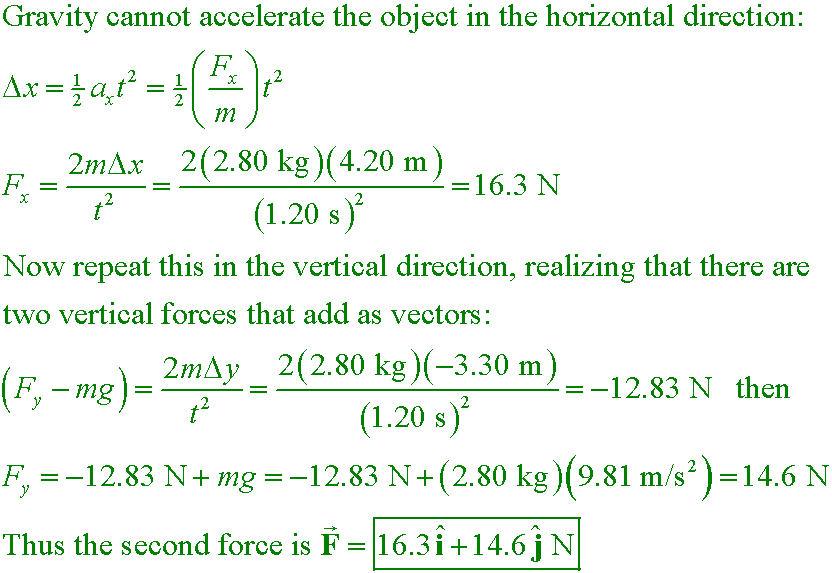
Hint on PoP5 3.09
